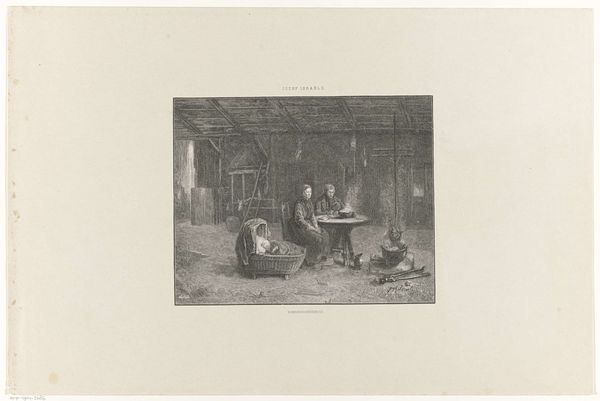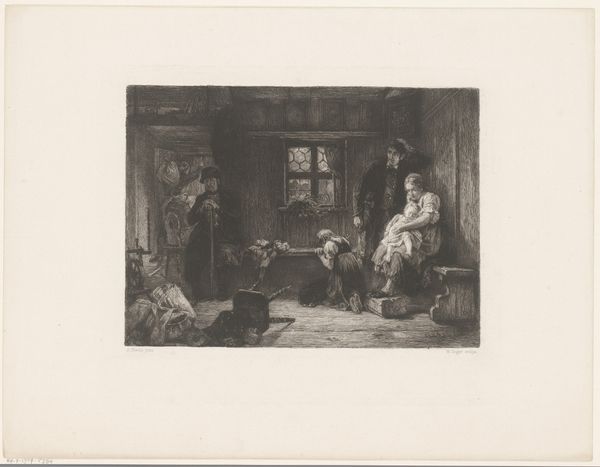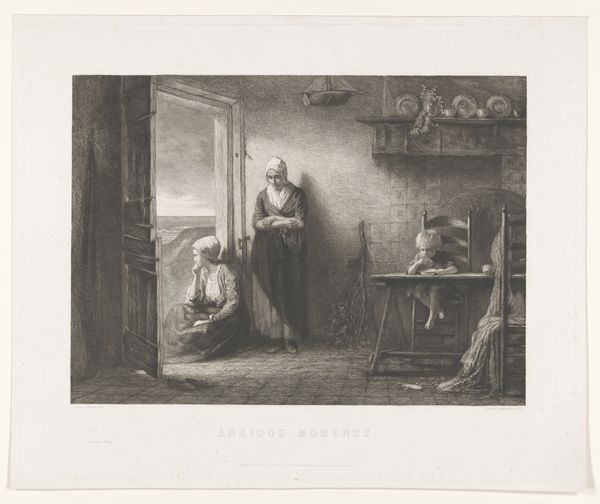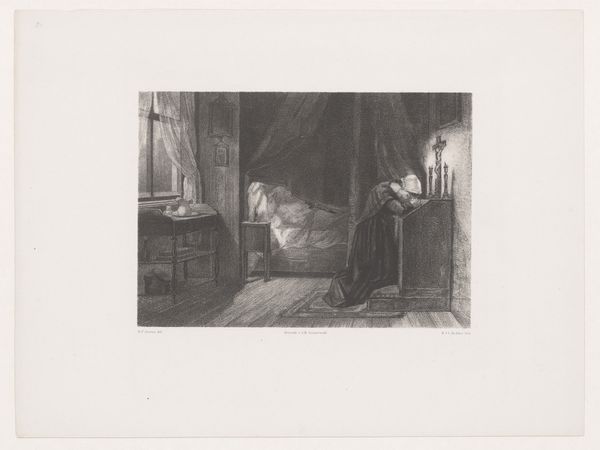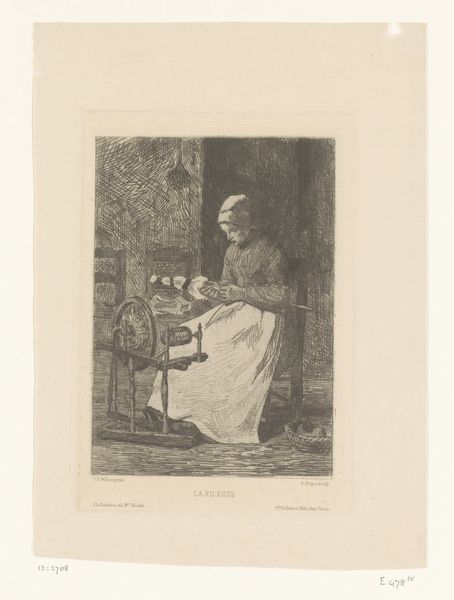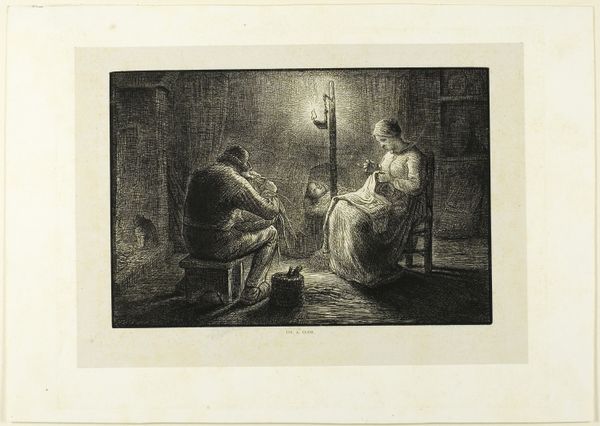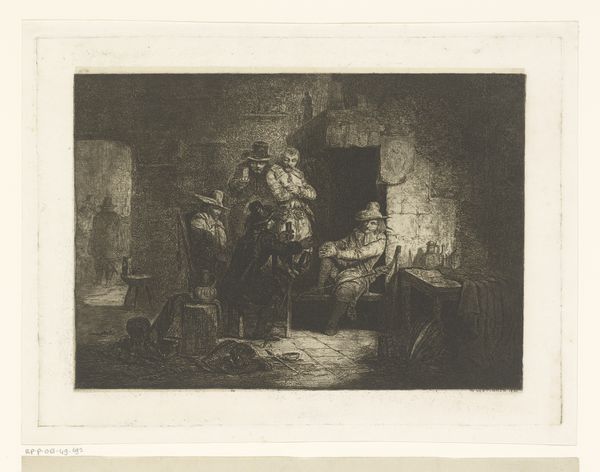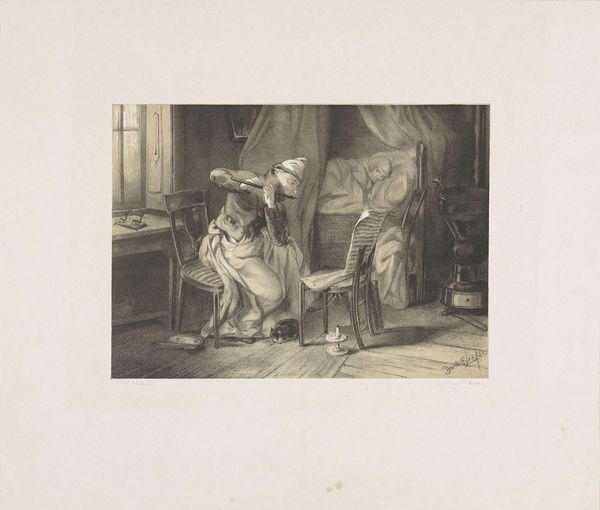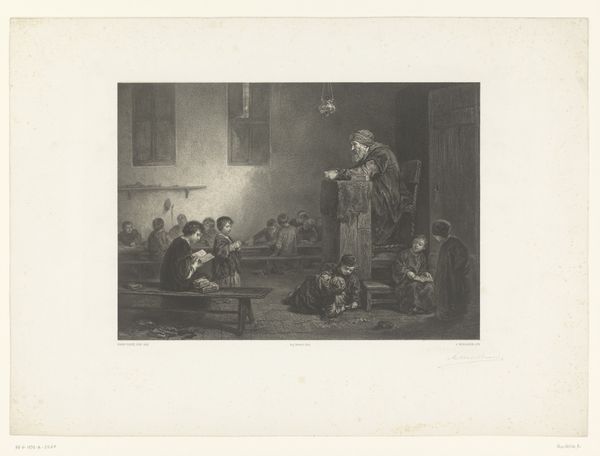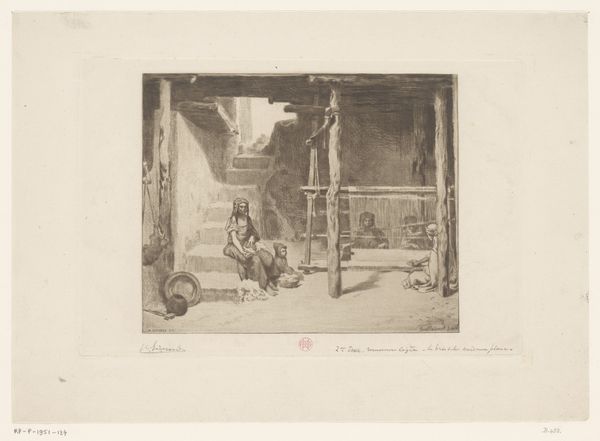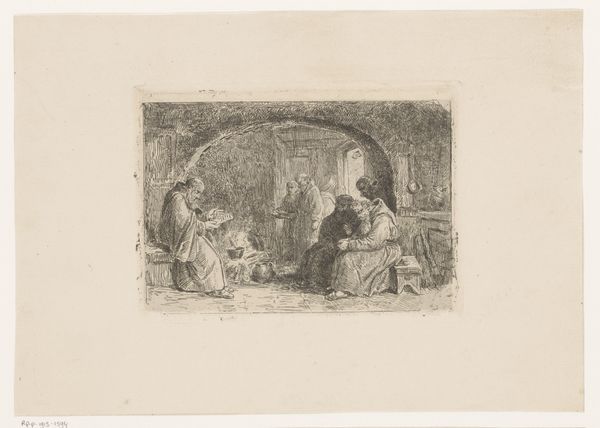
drawing, print, graphite
#
portrait
#
drawing
# print
#
landscape
#
graphite
#
genre-painting
#
realism
Dimensions: height 270 mm, width 350 mm
Copyright: Rijks Museum: Open Domain
Curator: A certain stillness emanates from this work. The texture and tonal variations achieve an engrossing effect. Editor: Indeed. What you’re observing is “Woman by the Fireplace,” dating from approximately 1877-1890, a graphite drawing now held at the Rijksmuseum, crafted by Jan Mesker. It certainly captures a moment of quiet domesticity. Curator: The immediate effect is the light from the hearth, no? Note how Mesker creates an inward-leading focal point by layering shades towards the brightest patch around the woman. He truly grasped how the medium's materiality could replicate luminous effects. Editor: Absolutely. It speaks to a broader tradition, actually. During this period, Realism aimed to represent everyday life, especially those of the working class, quite unlike idealized academic art of the time. Notice the woman’s posture, the very ordinary details in the scene, like the cats. It serves almost as social commentary, subtly drawing attention to a lifestyle often unseen or ignored by the upper classes. Curator: Well, focusing purely on the compositional elements, it is clear that this is meticulously observed with strong contrasts of dark and light. You've got horizontal and vertical lines creating balance, combined with softer textures that emphasize the firelight glow and also direct the gaze. The placement of the doorway behind and to the left creates interesting juxtapositions. Editor: Consider also that the art market was changing then. Printmaking made art more accessible, catering to an expanding middle class eager for genre scenes reflecting their values and world. So a drawing such as this could then circulate among a wider public, reinforcing certain notions about labor and home. Curator: I grant that knowing the broader societal context enhances the viewing experience, but ultimately, for me, it all boils down to the skillful arrangements within the composition—how all visual and material pieces create such evocative harmony and balance. Editor: And for me, understanding those exterior factors is how we give deeper relevance to the aesthetic experience that you’re perceiving. Mesker was doing far more than merely depicting a scene. Curator: Very well. Despite our different approaches, it's still a fascinating experience examining this scene together. Editor: Indeed, a drawing which offers us varying paths into a world which no longer exists.
Comments
No comments
Be the first to comment and join the conversation on the ultimate creative platform.
